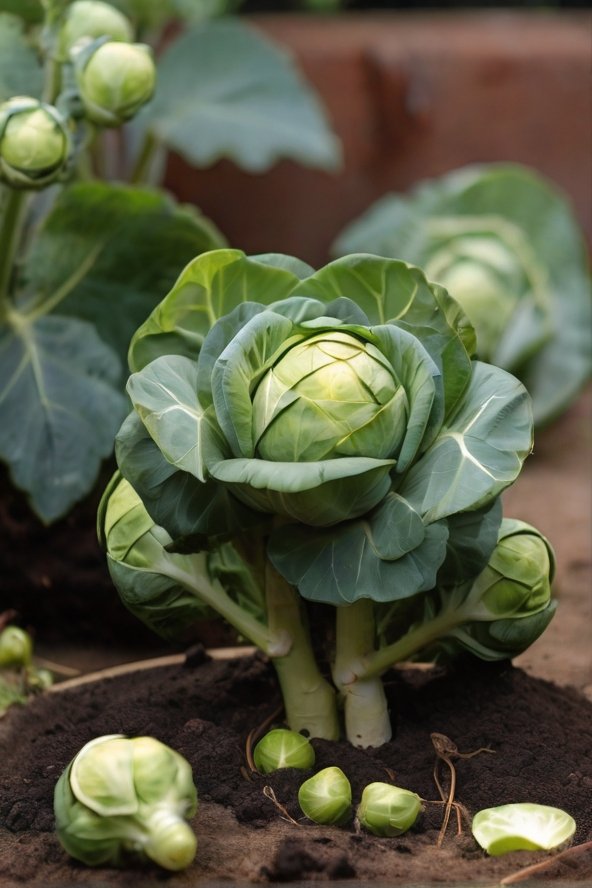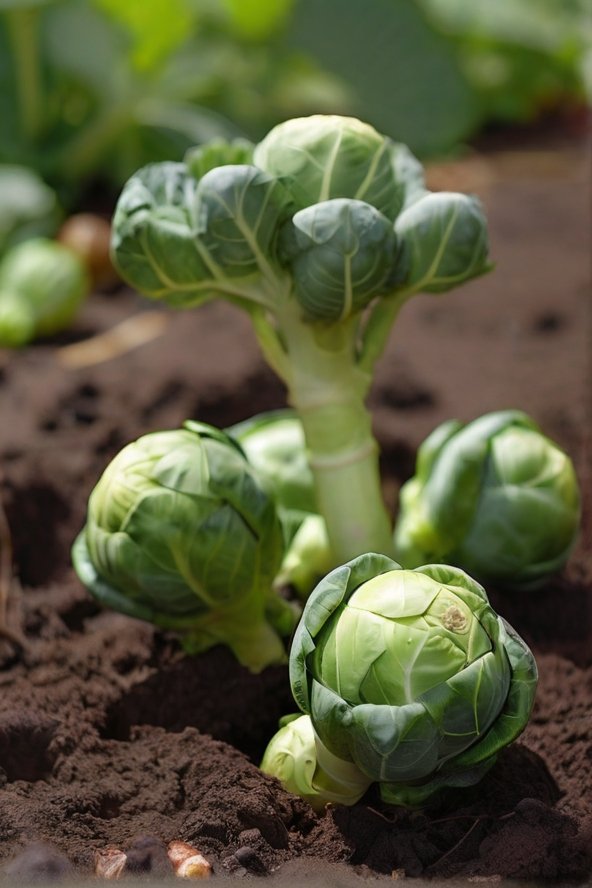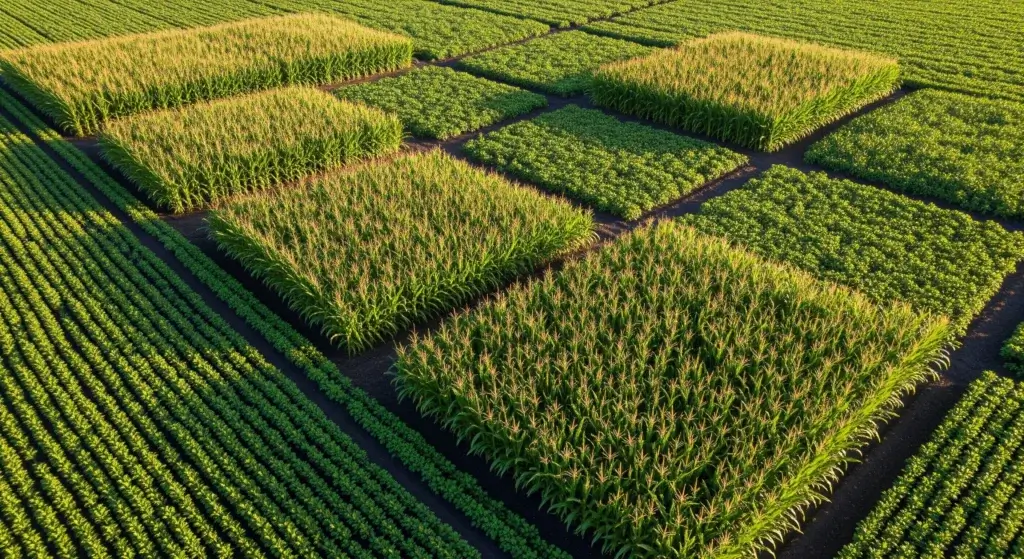
Brussels sprouts, not only nutritious but also delightful on the palate, make for a fantastic addition to your vegetable garden.
Embarking on the journey of growing these mini-cabbages at home is not only rewarding but can yield a plentiful harvest.
In this all-encompassing guide, we will navigate through the steps to ensure the successful growth of Brussels sprouts, beginning with the selection of the right sprouts and extending to the nurturing and harvesting processes.
Let’s delve into the fulfilling experience of cultivating Brussels sprouts at home.
How To Grow Brussels Sprouts
Choosing your sprouts
When it comes to growing Brussels sprouts, selecting the right sprouts is crucial.
There are different varieties of Brussels sprouts available, each with its unique characteristics. Some popular varieties include:
- Doric
- Brigitte
- Churchill.
It’s essential to choose a variety that suits your local climate and the space available in your garden.
- Read also: Tips on How to grow Lemon balm
- Read also: A Guide on How to Grow Hydrangeas in a Pot
Preparing the soil
Creating an optimal environment for Brussels sprouts begins with the soil.
These mini-cabbages flourish in well-drained, fertile soil with a pH of 6.5 or higher.
Prior to planting, enhance the soil’s fertility by incorporating well-rotted manure or compost.
The key is to ensure the soil is firm around the plants, providing the stability that Brussels sprouts prefer.
Sowing & transplanting
For an early crop, sow Brussels sprouts from February to April in modular trays in a greenhouse or cold frame.
Move the young plants outside after the last frost.
Alternatively, you can sow the seeds directly into the ground from early March to April.
Sow the seeds 13mm deep in rows 15cm apart.
Once the seedlings are about 2.5cm tall, thin them to roughly 7.5cm apart.
Transplant the seedlings outdoors from mid-May to early June, leaving about 60cm between plants and 75cm between rows.

Nurturing Your Sprouts
Watering & feeding
Brussels sprouts require consistent watering and feeding to support their growth.
Water the plants regularly, especially during dry spells, and feed them with a high potassium general fertilizer, such as Vitax Q4, at a rate of three handfuls per square meter/yard.
Sunlight & support
Optimal exposure to sunlight is paramount for Brussels sprouts.
Select a sunny location in your garden to ensure they receive full sun, promoting vigorous growth.
Given their potential height, choose a sheltered spot to shield them from strong winds, preventing any potential damage to the tall plants.
Care & maintenance
To ensure the healthy growth of your Brussels sprouts, it’s important to provide them with proper care and maintenance.
Weed carefully around the plants to avoid disturbing the roots, and protect them from birds by using netting.
Additionally, mulch around the base of the plants with well-rotted compost occasionally to retain moisture and suppress weed growth.
Tips on Proper Harvesting Your Brussels Sprouts
Here are some tips on properly harvesting your Brussels sprouts:
Ripe sprouts
Ripe Brussels sprouts are ready for harvest when they reach about an inch (2.5 cm) in diameter.
You can easily twist or snap them off with your fingers.
Alternatively, use a sharp knife for a clean and precise cut.
Harvest time
The prime time for harvesting Brussels sprouts is in the fall, post a few light frosts.
Once a few sprouts are fully developed, you can initiate harvesting.
Continuously plucking ripe sprouts encourages new ones to form on the plant.
Harvesting can be an ongoing process as long as sprouts are present.
Maturity signs
Sprouts should be firm and about an inch (2.5 cm) in diameter for optimum flavor and nutrients.
Picking is best done before the leaves of the sprout turn yellow and begin opening.
Lower sprouts will mature first, so start by picking those that are lower on the stalk, and work your way upwards.
Hybrid plants
For hybrid plants, commence checking for ripeness approximately 80 days after planting.
Indications of readiness include the size and firmness of the Brussels sprout.
Regular monitoring ensures you harvest them at their peak quality.
Storage
Preserve the freshness of your harvested Brussels sprouts by storing them in the fridge for at least a few weeks.
Regularly cull yellowed or blackened leaves, and trim the stalk end for a fresh cut.
Composting discarded food scraps ensures an eco-friendly approach to waste management.

Benefits of Growing Brussels Sprouts
Brussels sprouts offer a wide array of health benefits, making them a valuable addition to your diet.
Here are some of the key advantages of incorporating Brussels sprouts into your meals:
Nutrient powerhouses
Brussels sprouts are rich in essential nutrients, including vitamins, minerals, and antioxidants.
They are particularly high in vitamin K and vitamin C, both of which are vital for various bodily functions.
Heart health
The consumption of Brussels sprouts has been linked to a reduced risk of heart disease.
They contain compounds that can help decrease inflammation and support cardiovascular health.
Cancer protection
Brussels sprouts and other cruciferous vegetables are associated with a lower risk of certain cancers, including those of the lungs, kidney, breast, bladder, and prostate.
They contain unique compounds that may help protect against cancer and inhibit the growth of tumors.
Eye health
The vitamin A, lutein, and zeaxanthin found in Brussels sprouts are beneficial for vision and eye health.
These nutrients can help promote healthy vision and protect the eyes from age-related conditions.
Digestive health
Brussels sprouts are an excellent source of dietary fiber, which is essential for digestive regularity and gut health.
A high-fiber diet can help alleviate constipation and support overall digestive function.
Weight management
With only 38 calories per cup, Brussels sprouts are a low-calorie, nutrient-dense food that can be a valuable addition to a weight management plan.
Their high fiber content can also help promote feelings of fullness and satiety.

- Read also: A Guide to Growing Dipladenia Plants
- Read also: A Comprehensive Guide to Growing Cordyline Red Sister Plants
Conclusion
Cultivating Brussels sprouts in your own garden can be a source of fulfillment and joy.
This guide provides a comprehensive roadmap to help you successfully nurture these nutritious vegetables, ensuring a satisfying harvest of delicious, homegrown Brussels sprouts.
Follow these steps, and soon you’ll be savoring the taste of your thriving Brussels sprouts straight from your garden. Happy growing!
FAQs
Brussels sprouts are typically ready to harvest from mid-October to early November.
Some popular Brussels sprout varieties include ‘Doric,’ ‘Brigitte,’ and ‘Churchill.’
Brussels sprouts can grow quite tall, so it’s important to choose a sheltered spot where they won’t be buffeted by strong winds.
Brussels sprouts thrive in well-drained, fertile soil with a pH of 6.5 or higher.



